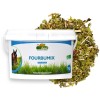
Active filters:

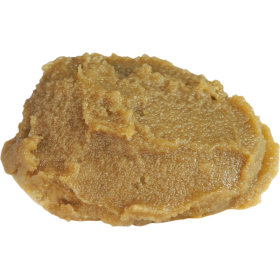
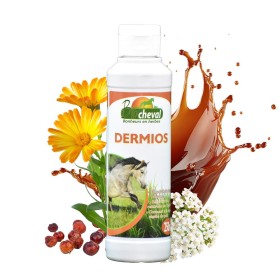

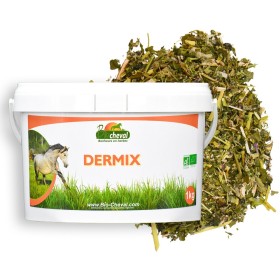


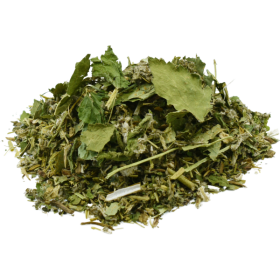
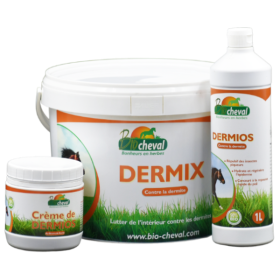

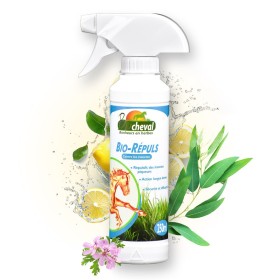

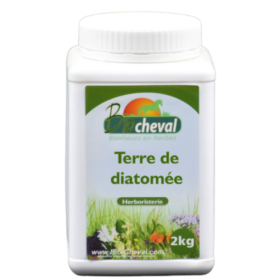

Itching is a source of worry for many owners, as it can quickly become painful for the horse if left untreated. Natural products offer effective solutions thanks to their rich composition and the qualities of their ingredients.
Identifying the skin problem is the first step towards recovery.
The most common dermatitis is Recurrent Equine Summer Dermatitis. For reasons that are not yet fully understood, some equines are hypersensitive to the saliva of certain biting insects. Particularly those of the Culicoides genus, a midge found in temperate zones. This chronic hypersensitivity is sometimes called "summer scabies", but it is an allergic reaction. The first symptoms generally appear between the ages of 2 and 6 and are seasonal, since Culicoides disappear in winter.
These insects are most active when the weather is clear, neither too hot nor too cold, and with no strong winds. They like to live near bodies of water and manure. It is useful to limit the development of Culicoides, not only because it helps prevent dermatitis, but also because they can be disease vectors. To do this, it is preferable not to place shelters directly against the river, to empty any standing water that has accumulated near the horses (e.g. unused troughs) and to evacuate the droppings as they come in. In the stables, you should ideally avoid using lights at night in the summer, clean and empty stalls that are no longer in use (e.g. stables where the horses only spend the night in their stalls in winter) and keep the manure as far away from the horses as possible.
Summer dermatitis initially manifests itself as damaged manes and slightly hairy areas, followed by more obvious lesions. Most often, it is the tail, mane and possibly the topline that are affected, but you may also find irritation and crusting on the head and ears. The horse will scratch more and more often and become nervous at times when biting insects are present. The inflammation caused by the bite can eventually lead to intense pain: your horse may no longer tolerate being touched in certain places, and react violently when putting on tack or a blanket. Dejection and chronic signs of malaise may set in, combined with weight loss and poor general condition.
As the years go by, the symptoms become more intense and only cease for a few months each year, when there is no Culicoides activity at all. The skin thickens in the affected areas and the hair no longer grows back. The horse suffers from severe sores throughout the summer.
We don't know exactly what causes this allergy. Certain breeds seem to be more affected. Several genes are thought to be involved, but these have not yet been identified.
EERD is thought to be linked to other allergic dermatitis and respiratory allergies (emphysema).
Mature horses imported from countries with different climates appear to be much more susceptible to Culicoides bites and are particularly prone to summer dermatitis.
There is no cure for the causes of dermatitis - which are poorly understood - but certain measures can help to eliminate the symptoms.
Veterinary medicine does not yet have a miracle cure for dermatitis. Desensitisation protocols do not yet have a good success rate. The vet can suggest anti-inflammatories or antihistamines to relieve the equine, but here again, these are not systematically effective. The vet may then advise external treatment to stop the itching.
All the measures taken to keep biting insects away are effective, since their saliva is responsible for the inflammation that causes the itching. However, they are difficult to manage over the long term. Insecticides need to be applied very frequently to remain effective. They are likely to generate resistance in insects, and their use is increasingly regulated in the interests of protecting the environment. Rugs can be more or less well tolerated by horses. They can cause new lesions to appear, either through rubbing (wounds) or wet maceration (scabies, pyoderma, mycosis). The horse may systematically destroy the rug, either on its own or in interaction with other horses. Lastly, the blanket is accident-prone: it can move in the owner's absence (equine trapped or panicked), or trap an insect that manages to crawl underneath (equine driven mad by the presence of the insect). These measures are therefore not ideal in the long term. However, they can provide rapid relief for the horse while more permanent solutions are put in place. If the measures taken to keep insects away from your horse are completely ineffective, it may be a skin problem other than summer dermatitis.
Numerous lotions are available to treat dermatitis lesions. They generally have a number of beneficial actions: providing relief, providing mechanical protection against insects, and stimulating healing. A number of dermatitis cases are managed in this way with very good results. In this category, you'll find a number of lotions, creams and macerates that have been used on many horses, donkeys and ponies.
To space out the treatments or for the most virulent forms of dermatitis, other actions can help to reduce the symptoms from year to year.
These actions target the inside of the body, supporting essential physiological functions.
A distinction is made between aromatherapy (essential oils), phytotherapy (plants), gemmotherapy (buds), homeopathy and energy treatments. More and more vets are training specifically in these areas.
We prefer plant mixtures because they are particularly well suited to equidae (which are herbivores) and provide numerous benefits with very few risks and contraindications. Integrated into the feed, they don't add a huge workload for the groomer. Another advantage is that ingesting plants is compatible with a large number of other alternative treatments.
In the case of dermatitis, the physiological functions targeted will mainly be those of excretion (allowing the elimination of toxins and metabolic waste), as the skin is an emunctory (involved in the elimination of waste). By stimulating this function, we speed up the evacuation of allergens responsible for inflammation.
As an internal support, Dermix is ideal for equines suffering from dermatitis. It encourages waste elimination, stimulates hair regrowth and helps combat allergies.
You can complement its action with an external treatment: Dermios for the manes and top line, Dermios Cream for the underside of the belly, around the ears and the head. If your horse scratches near the eyes or mouth, you can apply Calendula macerate. If there are a lot of Culicoides, you can apply Diatomaceous Earth all over the body, as its abrasive texture and drying properties kill them. During care and work, you can apply Bio-Repuls to prevent the insects from disturbing your horse or causing him to flee: relief for him, safety for both of you.
This is an allergic dermatitis, but is not linked to the bite of Culicoides. The seasons in which symptoms are visible vary according to the allergens involved.
Therefore, if your equine has a dermatitis whose symptoms are not reduced by anti-insect measures, and do not appear systematically in summer, you may suspect atopic dermatitis. If the skin problem is clearly contagious, it is certainly not atopic dermatitis.
The itching range is also suitable for horses suffering from atopic dermatitis. For very allergic horses, you can increase the effectiveness of Dermix by combining it with plantain. Diatomaceous earth is not useful, however, as it acts on insects and not on itching.
This is known as photodermatosis. It is generally linked to a product or plant that the horse has touched or ingested, making it hypersensitive to UV rays. This can cause itching, lesions, sunburn, etc
Several horses may be affected at the same time if they have consumed/touched the same product or plant. You could then be misled into thinking it was a contagious skin disease.
First of all, it is important to identify the product or plant that has caused the photodermatosis so that it can be removed from the horse's environment.
Appropriate care can speed up the healing of lesions.
For external care, opt for Calendula macerate, which is very gentle, soothing and suitable for application to the head.
Internally, you can use Dermix to help the body eliminate photosensitising substances and to help the skin and hair regenerate. Chlorella (in the herbal section) plays the same role. Remineralising cures can also be useful for accelerating growth: Nettle, Podomix, Vitamix, Fucus, etc
Itchy, i.e. itchy, pyoderma is caused by the presence of bacteria. It is more a complication of a skin problem than a condition in its own right. A weakened immune system, pre-existing lesions (following dermatitis or photodermatitis, tack wounds) and contact with dampness, mud or manure are all factors in the onset of pyoderma. Dermatophilosis, often confused with mud mange, is a type of pyoderma.
In the event of suspicion, care should be taken to ensure that care equipment, rugs and blankets are not shared by several horses.
There are two actions to be taken: reinforcing natural defences and cleansing/repairing the skin.
Immun'mix will help your horse to fight the development of bacteria. You can combine it with Dermios, Dermios Cream or Mud Scab Remover. In autumn, it's best to use one of the two creams rather than the lotion to maintain protection against the elements and mud.
Scabies is caused by a parasite - a mite - and also causes hair loss and, in some cases, itching. They are contagious and manifest themselves in lesions that can be found all over the body. It is not easy to distinguish them from pyoderma without the vet taking skin samples. If the problem is minor and you choose to take care of it yourself, make sure you use anti-bacterial, anti-mite and anti-fungal products. Did you know? Mud mange - the real kind - is known as chorioptic mange. Ear scabies is a type of psoroptic mange.
Mycosis - which includes dermatophytosis, i.e. ringworm - can cause horses to scratch, but this is not always the case. The shape of the lesions - round, like a coin - should give you cause for alarm. Contagion to humans is not impossible, so make sure you wear gloves. You need to use an anti-fungal treatment.
Immun'mix will help your horse to fight mange and fungal infections more effectively. Externally, Mud Scab Eraser is the most suitable, but if you have Dermios or Dermios Cream at home, they may also be suitable. In fact, the external skincare products in the itching range are genuine "grandmother's remedies" that can be used to care for all skin types that have been attacked.
Active filters:












